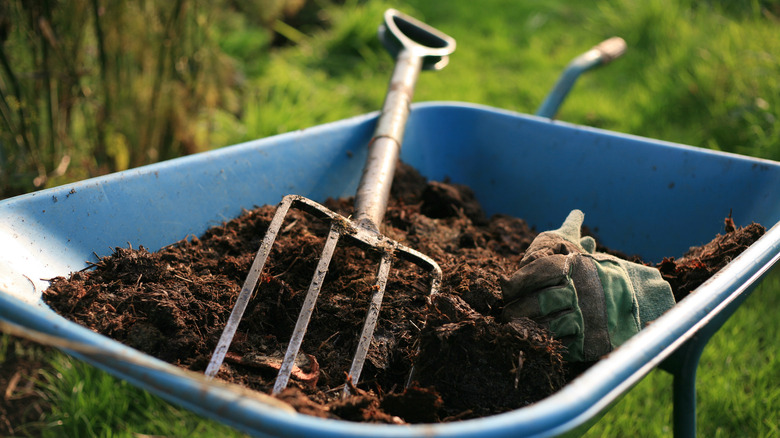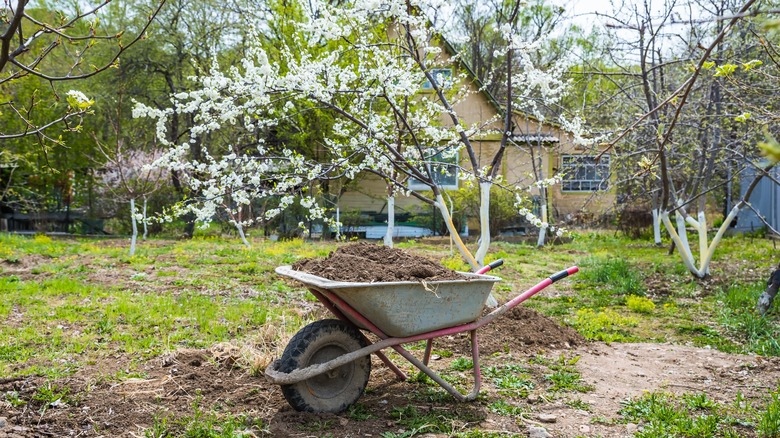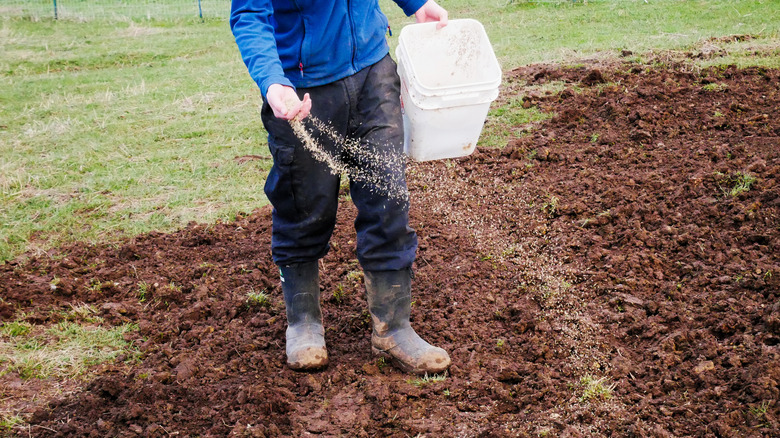The Best Organic Fertilizers To Use In Spring For Your Lawn And Garden
Spring gardening means different things to different kinds of gardeners. For some, it means watching spring bulbs come up; for others, it means getting containers ready to plant annuals, while others use amendments and soil conditioners to enrich the soil in their garden beds. For other folks, it means getting the lawn ready for summer. It's too early to mow until at least May in most areas, but you can start feeding your lawn to keep it green and healthy. As a professional gardener, my business is based on using organic methods. There are a number of good organic fertilizers to use on your lawn and garden in spring to get them off to a good start.
Many lawn and garden pros use chemical fertilizers. In fact, these are a huge part of this industry. But in recent years, there has been growing concern about the environmental impacts of using chemical fertilizers. Chemical runoff from lawns can contaminate ground water, and the use of herbicides and pesticides has had a disastrous impact on pollinators, especially honeybees. Many consumers are interested in switching to organic lawn and garden care products if they haven't already.
Alas, the lawn care industry is still very attached to its ways of doing things. I've even heard lawn care workers refer to pre-emergent herbicide as "fertilizer," which, of course, it isn't. But things are slowly changing. Even ChemLawn changed their name to TruGreen, knowing that consumers are more concerned about environmental impacts from chemicals. Fortunately, there are many commercially available organic fertilizers for your lawn and garden, including easy-to-use granular fertilizers. It's also fairly simple and cost-effective to make your own organic fertilizer.
Compost and other organic fertilizers
Consider your budget, time, and the amount of energy you want to put into fertilizing. Strictly speaking, fertilizing should not be necessary if your soil is healthy. But the easiest way of improving soil nutrition (i.e., fertilizing) is by adding compost. You can purchase compost in bags or in bulk. Bagged mushroom compost is an excellent amendment. Or you can start a compost pile or bin to make your own DIY compost. You can also add used coffee grounds and/or wood ash from your woodstove, fire dish, or fireplace to your soil for an easy DIY fertilizer. You can rake any of these over your lawn before planting your grass seed to help add some nutrients.
In spring, mix some compost in with vegetable garden soil to make a rich, well-textured base for planting. For flower beds, spread a thin layer of compost on the surface and gently mix it in with hand tools. You can also try compost tea, which can make lawns and gardens more lush and is becoming a more popular option. When I took a course on lawn care at the local botanical garden, the teacher, a longtime professional landscaper, spoke very excitedly about discovering compost tea and other nonchemical options for fertilizing lawns.
Using organic slow-release granular fertilizers is also an easy method. A number of companies make good ones. Espoma makes products specific to many kinds of plants and uses like vegetable gardens. For lawns, try Down to Earth and Purely Organic. It's important to use these products properly, as even the organic versions of these granules can "burn" plants if they're not applied with sufficient water.
How and when to fertilize your lawn and garden in spring
Spring is the perfect time to fertilize the soil in your garden and lawn. Wait until days are consistently above 55 degrees (in the Northeast, this generally means mid- to late April, but it can vary). For perennial flowers, you should fertilize just as the active growth season is beginning. For late spring and summer blooming perennials like phlox, astilbes, day lilies, etc., a light layer of compost mixed in is sufficient. If you have lots of late summer or autumn bloomers and/or plan to add some annuals to your beds, mixing in some organic granular fertilizer will help keep plants blooming and healthy.
If you're using granular fertilizer, you need to water thoroughly after application to activate the nutrients. For existing flower beds, sprinkle on the surface, a couple of inches from the base of perennials, then water. For lawns, use a spreader or toss with gloved hands, and then water after applying. To add to the vegetable garden, it's best to use granular fertilizers about a week before planting. Rake into the soil about 4 inches deep, then water. If you're using compost tea, this is also best applied in spring and can also be used on lawns every two to four weeks or as needed.
Organic fertilizers should be applied in spring; fertilizers should be avoided late in the season just before plants enter their dormant period. There is one exception: If you grow peonies, these hardy spring-blooming perennials benefit from an occasional (every other year) light top dressing of aged, composted manure in autumn, which breaks down gently in the soil over the winter.


